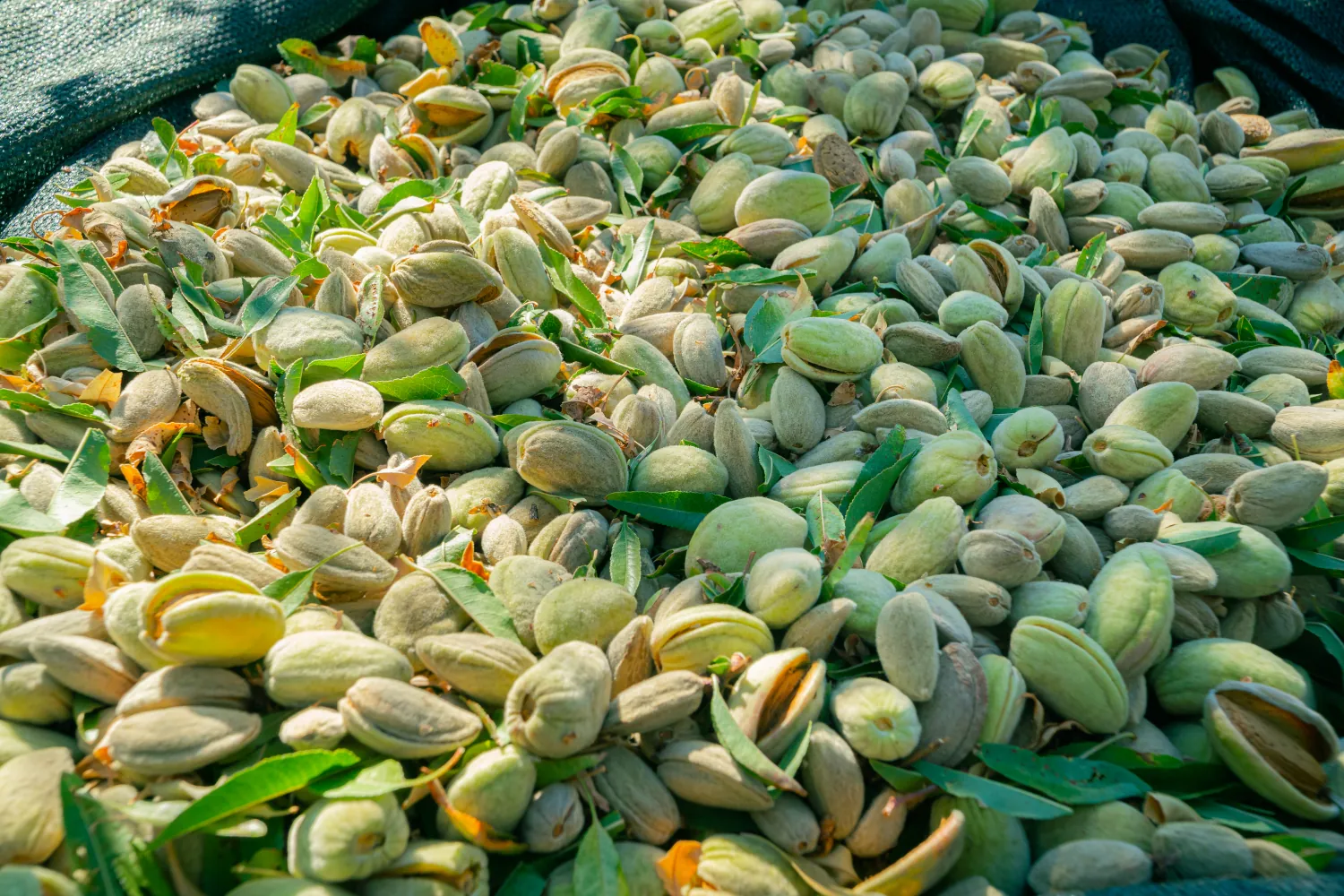Almonds are renowned worldwide for their delectable taste, versatility, and numerous health benefits. When exploring the realm of almonds, two significant varieties emerge Spanish almonds and Californian almonds. While they may appear similar at first glance, closer examination reveals distinctive characteristics that set them apart. This article will delve into the differences between Spanish and Californian almonds and the advantages of investing in Spanish almonds over their Californian counterparts.
Origins and Cultivation
Spanish almonds trace their roots back to Spain, a country revered for its long-standing tradition of almond cultivation. The Mediterranean climate, with its hot summers and mild winters, provides an ideal environment for these almonds to thrive. Spain boasts a rich history of almond production, making it one of the top global producers. In contrast, Californian almonds originate from the United States, specifically the sun-soaked state of California. California accounts for a vast majority of the world’s almond production. The warm, dry climate and fertile soil create favorable conditions for the growth of almond trees, resulting in an abundant harvest.
Flavor Profiles
Spanish Almond Variety
Spanish Almonds are celebrated for their distinct flavor profile. They tend to have a slightly sweet buttery taste with a hint of bitterness. The flavor is often described as intense and concentrated, making them a popular choice for culinary applications and confectionery.
Californian Almond Variety
On the other hand, Californian almonds possess a milder and slightly sweeter flavor. They are known for their delicate and slightly crunchy texture. Californian almonds are often favored for snacking, baking, and as a staple ingredient in various dishes and recipes.
Physical Characteristics
Spanish Almonds
Spanish almonds are generally smaller than their Californian counterparts. They exhibit a darker and rougher skin texture, partially responsible for their distinctive flavor. The skin of Spanish almonds also contains slightly higher levels of tannins, contributing to their bitter notes. Below are a few examples of the diverse Spanish almond varieties. Each type brings its distinct qualities to the table, allowing for various culinary applications and flavor profiles.
- Marcona: Marcona almonds are perhaps the most famous variety in Spain. They are known for their round, plump shape and smooth, buttery texture. Marcona almonds have a delicate, sweet flavor and are commonly used in traditional Spanish dishes like turron and marzipan.
- Largueta: Largueta almonds are another popular variety from Spain. They are slightly longer and flatter than Marcona almonds and have a firmer texture. They are often used in traditional Spanish sweets and desserts like turrón and Spanish polvorones.
- Valencia: Valencia almonds are grown primarily in the region of Valencia in eastern Spain. They are similar in appearance to Marcona almonds but have a slightly less smooth texture. Valencia almonds have a sweet and nutty flavor and are commonly used in baking, confectionery, and as a topping for salads or roasted vegetables.
- Guara: Guara almonds are grown in the Aragon region of Spain. They are medium-sized almonds with a slightly elongated shape. Guara almonds have a pleasant, mild flavor and are often used in making marzipan, nougat, and other traditional Spanish sweets.
- Comuna: Comuna almonds are one of Spain’s most widely cultivated almond varieties. They have a smaller size and are characterized by a mildly sweet taste. Comuna almonds are often used in making almond milk, almond butter and as an ingredient in various culinary preparations.
Californian Almonds
Californian almonds tend to be larger and have smoother, lighter-colored skin. Californian almonds’ thin, papery skin is easily removed, revealing the light-colored nut inside. This variety is often preferred for its aesthetic appeal in culinary presentations.
The Case for Investing in Spanish Almonds over Californian Almonds
While Californian almonds have long held a dominant position in the global market, investing in Spanish almonds presents a compelling alternative. The favorable climate, sustainable practices, exceptional taste, and cultural heritage associated with Spanish almonds make them an appealing choice for investors seeking to diversify their portfolios. Furthermore, the strategic advantage of accessing European markets adds an extra layer of potential growth and profitability. At Agro Invest Spain, we provide the exciting opportunity to buy almond farms in Spain with our expertly crafted managed farmlands model. Let’s look at some advantages of our almond agricultural investment in Spain.
Climate and Soil
Spain’s Mediterranean climate provides ideal conditions for almond cultivation. The warm, dry summers and mild winters create a favorable environment for the growth and development of almond trees. Additionally, Spain’s diverse range of soils, including clay, sandy, and limestone-based soils, allows various almond cultivars to thrive. This favorable climate and soil combination contribute to the production of high-quality almonds.
Biodiversity and Sustainability
Spanish almond orchards boast rich biodiversity due to their integration with traditional agricultural practices. The concept of agroforestry, which involves combining trees with other crops, is commonly employed in Spain. Almond orchards often coexist with other plant species, promoting ecological balance and reducing the need for synthetic inputs.
Taste and Quality
Spanish almonds are renowned for their exceptional taste and quality. The diverse range of almond varieties cultivated in Spain offers various flavors and textures, catering to various culinary preferences. Whether you prefer sweet Marcona almonds or robust Largueta almonds, Spanish orchards provide an extensive selection. The traditional farming methods employed in Spain, such as hand-picking and careful post-harvest processing, contribute to the consistent quality of Spanish almonds.
Artisanal Tradition
Spain has a rich cultural heritage when it comes to almond production. Many Spanish almond growers follow age-old artisanal techniques passed down through generations. These traditional practices and a deep understanding of the land and the crop ensure meticulous attention to detail throughout the almond production process. Investing in Spanish almonds helps these local communities preserve their unique agricultural traditions.
Access to European Markets
Investing in Spanish almonds offers strategic advantages when accessing European markets. Spain benefits from a well-established regional distribution network and trade agreements as part of the European Union. This provides opportunities for market expansion and a more significant potential for profitability. Furthermore, Spanish almonds have gained recognition and protected geographical indication (PGI) status, emphasizing their quality and origin.
Secure your Spanish Almond Farmlands Today
While Spanish and Californian almonds share commonalities in nutritional value and overall appeal, their differences lie in flavor, appearance, and culinary applications. Spanish almonds stand out with their intense, buttery flavor and smaller size, deeply rooted in the almond-growing tradition of Spain. By investing in Spanish almonds, you can support sustainable agriculture and local communities and enjoy the unique flavors and qualities that make them stand out in the nut industry. So if you are ready to invest in Spain, contact the Agro Invest Spain team for unlimited time ownership of Spanish almonds investment.
For more expert information about almonds, read our blog on almond farming.
All rights of this content prepared by Api Group Agro Inversiones SL (“API Group”) belong to API Group. These rights are protected and the partial or complete copying, reproduction, distribution, processing or use of the content in any way without permission and without reference will result in legal and criminal liability of individuals.

